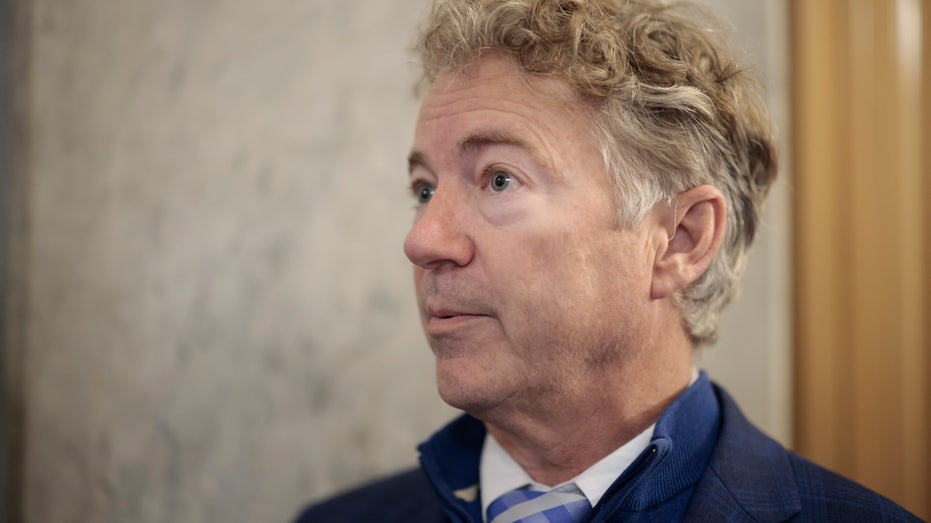Rand Paul unveils plan to slash federal spending over next 5 years to balance budget
US deficit expected to surge in coming years
Budget watchdog slams Biden admin for taking credit for deficit reduction: Not a result of their policies
Committee for a Responsible Federal Budget President Maya MacGuineas argues 'presidents always ignore the blame they have for the bad things in the economy.'
EXCLUSIVE: Sen. Rand Paul on Monday unveiled a new bill that includes trillions in budget cuts over the next five years in order to bring about a balanced budget.
The Kentucky Republican's proposal, a copy of which was first obtained by FOX Business, would yield a $65.8 billion surplus by fiscal year 2027. Collectively, the plan spends about $4.2 trillion less than the nonpartisan Congressional Budget Office estimated during that time period, a person familiar with the matter said.
HOW THE FEDERAL RESERVE MISSED THE MARK ON SURGING INFLATION
"Five years ago, we could balance our budget with a freeze in spending. Not cut anything. Since then, our debt has skyrocketed to $30 trillion with $2 trillion just from this past year," Paul said in a statement. "We cannot keep ignoring this problem at the expense of taxpayers, and my budget will put our nation on track to solve this crisis that Congress created."
The plan calls for cuts across the budget, excluding Social Security, which is racing toward insolvency. What is cut will be determined at a later time through the normal spending process. The goal is to set a parameter that Congress must fit its spending agenda within, rather than identifying specific cuts now.

Sen. Rand Paul (R-KY) speaks with reporters after a vote at the U.S. Capitol Building on December 13, 2021 in Washington, DC. (Photo by Anna Moneymaker/Getty Images / Getty Images)
Under the legislation, federal spending would freeze in fiscal year 2023 at the CBO's projected baseline level of $5.874 trillion. From there, it would steadily decline each year; in fiscal year 2024, Paul proposed slashing federal spending by $298.3 billion.
Still, the success odds for the bill – dubbed the Six Penny Plan – are slim. Paul has introduced near-identical versions of the bill in the past, all of which have died in the Senate as the result of bipartisan opposition. Democrats previously opposed cuts to many domestic programs, while Republicans resisted any efforts to slash military spending.
The gap between what the nation collects and what it spends has started to substantially decline following last year's $2.8 trillion deficit, with the government expected to post a deficit of $1 trillion in fiscal 2022.

Night falls at the the Capitol in Washington, Thursday, Dec. 2, 2021, with the deadline to fund the government approaching. ( (AP Photo/J. Scott Applewhite) / AP Newsroom)
But the CBO, in its latest budget and economic outlook released at the end of May, projected the shortfall will begin climbing again in 2024, eventually hitting more than 6% of GDP a decade from now. The U.S. has only recorded greater deficits than that six times since 1946.
CLICK HERE TO READ MORE ON FOX BUSINESS
"This is no time to break out the champagne glasses – deficits will remain extremely high and debt is on course to reach a new record as a share of the economy by 2031," Maya MacGuineas, president of the Committee for a Responsible Federal Budget, said in a statement after the report was released.
The nation's debt level is currently at a historic high of $30 trillion following unprecedented levels of spending during the COVID-19 pandemic.





















